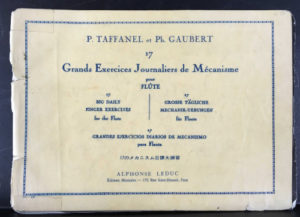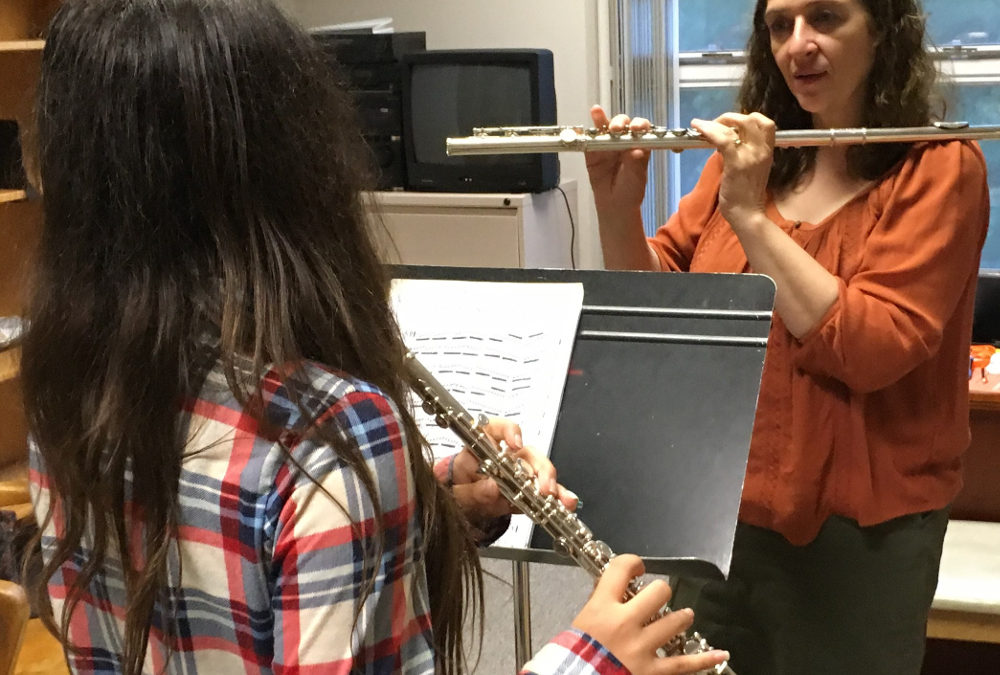You have read about breaking your practice time into thirds, and you’re good with doing that. Right? So, now lets talk about how to fill up your time in each section.
If you’re a flute major in college, you already have a better idea about all the myriad exercises that you can use for technique and tone. But even so, I know many a newly minted college flute major that still has an issue with this. I’m here to help you and let you in on a few tips that are my favorites, but are by no means exhaustive exercises and books.
First lets begin with scales. There are many middle and high school students that play the major and sometimes the minor scales and think that they are then done with scales. But people let me tell you something:
It’s not about the scales.
It’s about your interaction with the scales.
Now I have private grade school students that have to be able to play just the plain no-frills scales for solo festivals. So, I am not against just playing the scales. However, all my students (as well as myself) practice scale studies. Lots of different scale studies from different books. Always, of course, following the technique plan of doing the same scales studies for months on end.
What then do I mean by interaction with scales? It’s about the exercise. I love to play scale studies.



Love. Love. Love.
I could literally play scale books all day. But I’m a technique person. I’ve accepted that and moved on.
Lets get back on topic. My favorite book for scales studies is the bible of flute books the ubiquitous Taffanel & Gaubert, 17 Daily Exercises (17 Grands Exercises Journaliers de Mecanisme).

Look how old a dilapidated that book looks. For good reason, it isn’t hyped up. This book is the real deal.
There are many scale studies and meaningful exercises, that take you through every key signature.
When you work through an exercise in this way, you are interacting with the scale.
It really does nothing for you for your technique to just play a scale. But using the key signature and playing exercises that take you through all the keys is what counts.
T and G (as my students affectionately call it) has many exercises that get you through all the patterns of scales. If you are new to T and G, then begin with number 1 and 2. These are 5-note scales studies. Use all the articulations (I change articulations every 2 lines) and a metronome. These are your friends. Embrace articulations, and really embrace the metronome, as it is your anchor to help you stay steady and increase tempo slowly.
After #1 or #2, travel over to #4. Here is where you really pay the piper. This exercise takes you through all the major and minor keys, always changing articulation at every key change, not scale change. Work up to playing all the way through this exercise:
EVERY.
DAY.
If you can get this exercise into the 100’s on your metronome in every key, you are doing pretty good. When you have mastered #4 then move to #5 the chromatic scales.
Number 5 is highly beneficial to fast fingers if you do it with a metronome and you play every scale with all 10 articulations.
I was late coming to the table with this fun and ever useful exercise. I didn’t begin this #5 until I was a flute major in college. My teacher had me go through every chromatic scale with all 10 articulations EVERY. SINGLE. DAY.
At the beginning it was very slow going because your metronome is on very slow (like perhaps 45) and you’re listening intently for any unevenness. This can take a very long time. But that’s okay.
For my high school students who don’t have all the time or inclination to play all day (What! There are flutists like that?), I chose 2 or 3 scales and tell them that if they don’t have time for all of them, then whatever amount they do they must do all articulations even if they only have time for #1. Then do the same ones all week. Remember consistency is key.
Some other exercise/scale study books that have been useful to me are:
Marcel Moyse, Mechanisme – Chromatisme
Geoffrey Gilbert, Sequences for Flute
Marcel Moyse, Gammes et Arpèges (Not for the faint-of-heart.)
M.A. Reichert, 7 Daily Exercises for the Flute
These are just a few. There are tons more. You have to try out books and exercises to see what they can do for you. If you talk to 20 flutists they will all give a different favorite book and finger exercise. That’s perfectly okay. I love finding new exercises to bring into my routine. We learn best when we learn from each other.
Next up Routine – Tone.
Enjoy!
Dr. Flute
